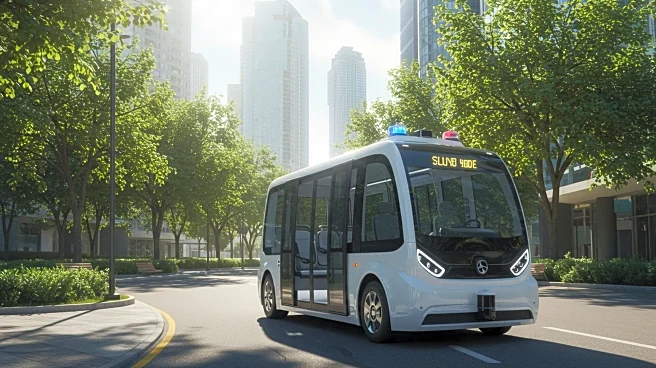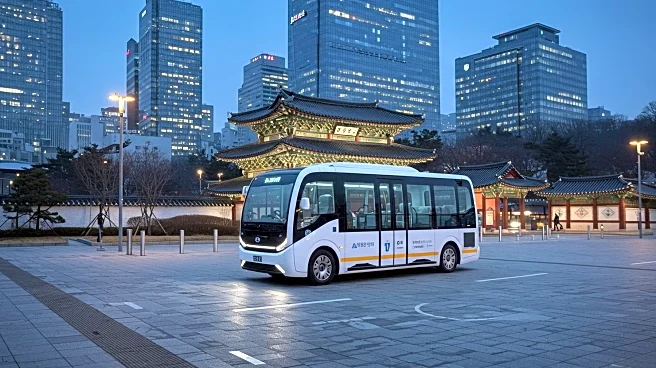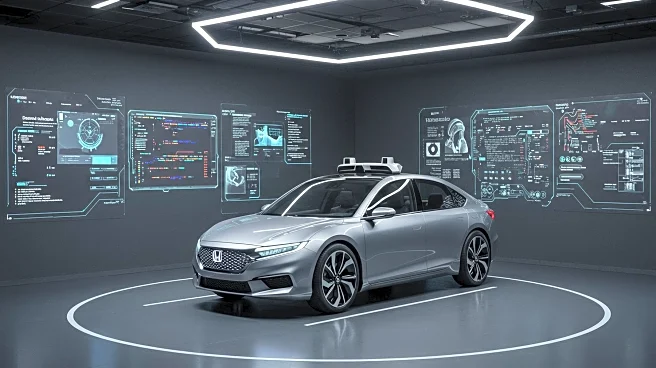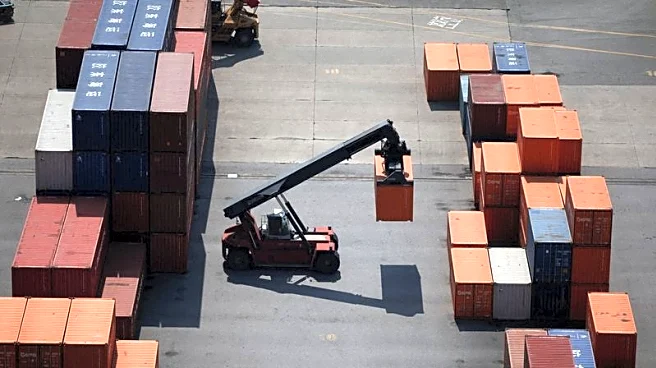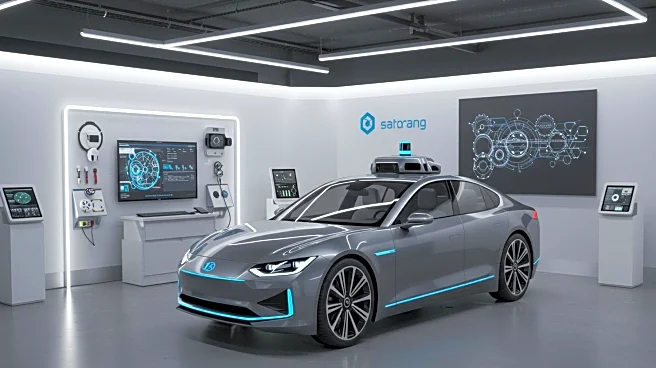What's Happening?
The Seoul Metropolitan Government has announced the launch of South Korea's first self-driving shuttle service, set to begin operations in late September. The service will feature two 11-seater shuttles running on a 4.8-kilometer circular route from Cheonggye Plaza to Cheonggye 5-ga, near the popular Gwangjang Market. Operating on weekdays from 10 a.m. to 5 p.m., the shuttles will not run on weekends and public holidays when the roads are designated as car-free. Initially, the service will be free, with plans to transition to a paid model similar to other city buses. The shuttles, which lack a driver's seat or steering wheel, are equipped with U-shaped seats, a large information screen, and a wheelchair lift. A safety staff member will be present on board, although they will not drive the vehicle. Safety verification tests are currently underway, with the aim of enhancing public transportation and boosting tourism in the Cheonggyecheon area.
Why It's Important?
The introduction of self-driving shuttles in Seoul represents a significant step forward in the evolution of public transportation. This initiative is expected to enhance the local economy by attracting tourists to the Cheonggyecheon area, a popular public space in central Seoul. The project also positions Seoul as a leader in adopting advanced transportation technologies, potentially setting a precedent for other cities in South Korea and beyond. By offering a glimpse into the future of urban mobility, the self-driving shuttles could influence public policy and encourage further investment in autonomous vehicle technology. The success of this initiative could lead to broader acceptance and integration of self-driving vehicles in public transportation systems worldwide.
What's Next?
Following the initial launch, the Seoul Metropolitan Government plans to extend the self-driving shuttle service to include nighttime operations and longer routes. This expansion aims to further integrate autonomous vehicles into the city's transportation network, providing more comprehensive coverage and convenience for residents and tourists alike. The ongoing safety verification tests will play a crucial role in determining the feasibility and safety of these future expansions. As the service transitions to a paid model, the city will likely monitor passenger feedback and usage patterns to optimize the service. The success of this initiative could prompt other cities to explore similar autonomous transportation solutions.
Beyond the Headlines
The deployment of self-driving shuttles in Seoul raises important ethical and legal considerations, particularly regarding safety and liability in the event of accidents. As autonomous vehicles become more prevalent, regulatory frameworks will need to evolve to address these challenges. Additionally, the shift towards self-driving technology may impact employment in the transportation sector, necessitating workforce retraining and adaptation. Culturally, the acceptance of autonomous vehicles will depend on public trust in the technology's safety and reliability. This initiative could also influence urban planning, as cities may need to redesign infrastructure to accommodate autonomous vehicles.
